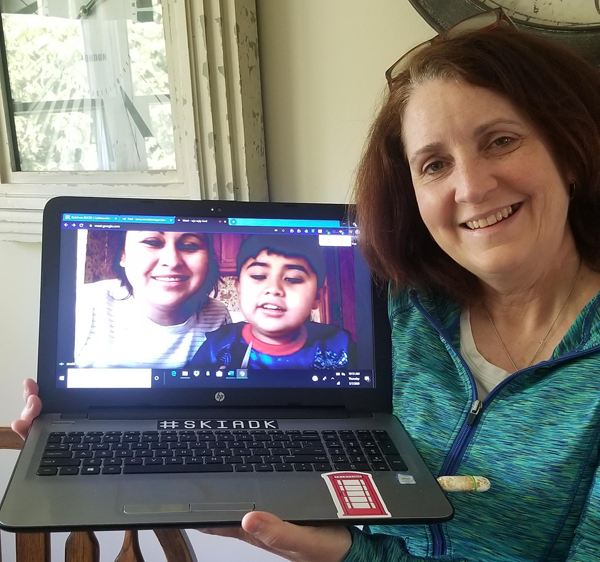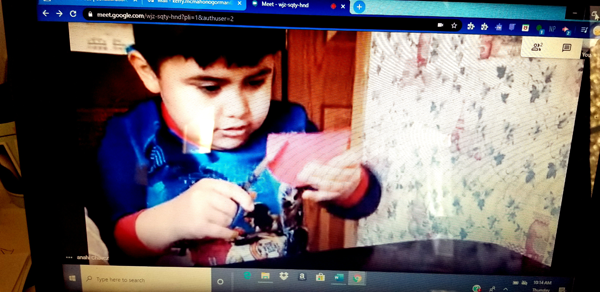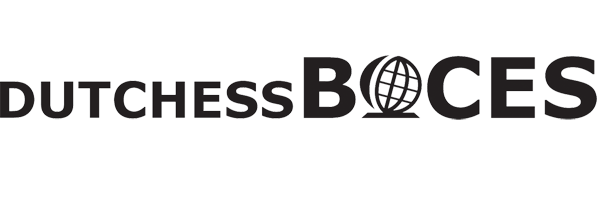
Occupational therapist Kerry McMahon-O'Gorman shows her computer screen during an OT session. On screen is student Raul Chavez Sanchez, who attends Vail Farm Elementary School, and his mother Jarette Chavez. Raul is working on cutting and handwriting skills.
For the past 20 years, Kerry McMahon-O’Gorman has spent her professional life as an occupational therapist helping young students at Dutchess BOCES and local schools. The work is hands-on and individually designed to help students accomplish tasks they are having physical difficulty in achieving.
Enter COVID-19.
Almost overnight, OTs, physical therapists, speech therapists, and all others providing required services for students had to figure out how to continue these services remotely without teaching tools from the classroom.
Video technology and good old innovation has made it possible.
“Most of our providers are using Google technology involving video, chat and calling features,” said Karyn Lange, BOCES Coordinator of Related and Itinerant Services. “The creativity and flexibility of our parents, students, and staff is what drives our success in the delivery of services.”
Connecting online is very helpful and offers insights not otherwise available, said McMahon-O’Gorman. She encounters students who need help from a parent to use devices and also parents who need their child to make the technology work.
“The one positive with all of this is that normally I don’t get to see the parents that much,” said McMahon-O’Gorman. “For me, now there is someone with almost all of my students on Google Meet. I am able to provide live demonstrations and strategies for the parents to use in the home." We also are able to brainstorm together creative ways to use materials within their home to be able to work on their goals, she added.
For everyone though, remote service is new and so is staying home all the time.
“We try to be entertaining and make it as interesting as we can because we know some of the kids aren’t going out at all,” said McMahon-O’Gorman. She includes exercising from her living room to get things moving. And at times, her students get a view into her life when one of her three cats walk in view of the camera.
Sessions have been positive and use items from home like play dough. Fine motor activities are improved by using things found at home to practice, like feeding Cheerios onto a strand of dry spaghetti or placing coins into a slit in the cover of an empty coffee can. Cutting cereal boxes into a puzzle provides another task.
McMahon-O’Gorman says the team has worked longer and harder hours to get things just right.
“I’m thankful to be on this special team collaborating together,” she said. “I am hopeful that we will be able to continue to use Google Meet after things return to ‘normal.’ It will be a great tool to share strategies with parents over video rather than just a phone call. Historically it has been difficult to schedule in person meetings with parents’ schedules. It would be great going forward to share an OT session with the parent or even a demonstration.”

